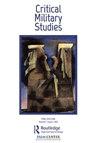死亡的可能性:窃听器,算法暗杀和道德上的谨慎
Q1 Arts and Humanities
引用次数: 8
摘要
本文探讨了战争中应有的谨慎原则,以及战场技术的改进使西方战争本质上更合乎道德的神话。美国的话语建构——我称之为良性混乱的军国主义——是道德的,因为它利用了技术先进的杀戮模式,试图将战争的伦理-政治困境化解为可量化的待解决问题。本文通过概述美国军事决策从实践判断伦理到计算技术伦理的转变来说明这种解体。为此,我评估了美国军国主义算法的两个具体案例。第一个案例追溯了附带损害估计算法(俗称bugsplat)的兴起。我研究了bug是如何编写的,它的基本设计缺陷,以及指挥官们错误地利用它来规避道德责任的实际利用。第二个案例探讨了SKYNET机器学习算法,该算法旨在通过SIM卡元数据的异构相关性为美国无人机袭击构建“合法目标”。虽然无人机打击因其个性化目标的能力而广受赞誉,但天网的算法过程最终会通过“恐怖主义”的数据构建侵蚀个人主观性,而个人主观性是战争伦理的基础。正如这两个案例所表明的那样,这种良性混乱的军国主义的最终目标是使杀戮的伦理-政治困境可量化、可预测和可解决。迫切需要调查军事环境中的社会技术相互作用;具体来说,实际判断被外包给道德上有问题的计算技术伦理的程度。本文章由计算机程序翻译,如有差异,请以英文原文为准。
Probabilities towards death: bugsplat, algorithmic assassinations, and ethical due care
ABSTRACT This article explores the principle of due care in war and the myth that improved battlefield technology makes Western warfare inherently more ethical. The discursive construction – which I term virtuous chaoplexic militarism – of the US as ethical by virtue of its utilization of technologically advanced modes of killing, seeks to dissolve the ethico-political dilemmas of war into quantifiable problems to-be-solved. This article illustrates this dissolution by outlining the transformation within US military decision-making from an ethics of practical judgement to a computational techno-ethics. To do this, I evaluate two concrete cases of US algorithms of militarism. The first case traces the rise of collateral damage estimation algorithms, colloquially known as bugsplat. I examine how bugsplat is programmed, its fundamental design flaws, and its practical exploitation by commanders to erroneously tick the box of ethical due care. The second case explores the SKYNET machine-learning algorithm that was designed to construct ‘legitimate targets’ for US drone strikes via heterogeneous correlations of SIM card metadata. While drone strikes are widely praised for their capacity to individualize targeting, the algorithmic process of SKYNET ultimately erodes the individual subjectivity that is foundational for ethics of war through data constructions of ‘terroristness.’ As both cases demonstrate, the ultimate goal of this virtuous chaoplexic militarism is to render the ethico-political dilemmas of killing quantifiable, predictable, and solvable. There exists an urgent need to interrogate socio-technical interactions in the military setting; and specifically, the degree to which practical judgement has been outsourced to a morally problematic computational techno-ethics.
求助全文
通过发布文献求助,成功后即可免费获取论文全文。
去求助
来源期刊

Critical Military Studies
Arts and Humanities-History
CiteScore
1.90
自引率
0.00%
发文量
20
期刊介绍:
Critical Military Studies provides a rigorous, innovative platform for interdisciplinary debate on the operation of military power. It encourages the interrogation and destabilization of often taken-for-granted categories related to the military, militarism and militarization. It especially welcomes original thinking on contradictions and tensions central to the ways in which military institutions and military power work, how such tensions are reproduced within different societies and geopolitical arenas, and within and beyond academic discourse. Contributions on experiences of militarization among groups and individuals, and in hitherto underexplored, perhaps even seemingly ‘non-military’ settings are also encouraged. All submitted manuscripts are subject to initial appraisal by the Editor, and, if found suitable for further consideration, to double-blind peer review by independent, anonymous expert referees. The Journal also includes a non-peer reviewed section, Encounters, showcasing multidisciplinary forms of critique such as film and photography, and engaging with policy debates and activism.
 求助内容:
求助内容: 应助结果提醒方式:
应助结果提醒方式:


